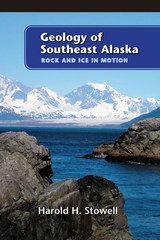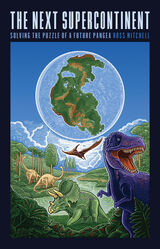
Well over a century after Darwin gave biology its unifying theory of evolution, the earth sciences experienced a similar revolution and the theory of plate tectonics took hold. Plate tectonics posed the idea that the earth's crust is divided into a number of large, thin plates always in motion relative to one another. In The Behavior of the Earth, world-renowned earth scientist Claude Allègre sets forth the exciting events in this contemporary revolution from its first stirrings in the nineteenth-century and Alfred Wegener's original model of continental drift (1912) through the development of its full potential in modern plate-tectonic theory.
Few scientific theories have been so all-encompassing, and none has surpassed plate tectonics in explaining such a wide variety of geological phenomena, from the origins of mountain building to the formation of the ocean floor. As it integrated our knowledge of the earth's surface with the investigation of its interior, plate tectonics fused two previously autonomous strains of scientific inquiry. Continental mobility changed for all time our view of the earth from a static globe to an evolving, living planet, and allowed us to see that changes in the earth's surface are but exterior manifestations of a dynamic interplay of forces within the crust and the mantle.Allègre casts his lucid exposition of this scientific theory within the historical context of its struggle for acceptance. As he introduces us to the huge cast of personalities and researchers who contributed to the theory, he illuminates the complex role that the scientific community plays in the proliferation and acceptance of new ideas. Allègre is as insightful in discussing the human motivation for scientific endeavor as he is skillful in presenting the science that results from this effort. Richly illustrated and including a glossary, this book offers the reader rare access both to the central theory of plate tectonics and to the constellation of problems and possibilities that preoccupy earth scientists today.

Written by a geologist with over twenty-five years of experience in the north, Geology of Southeast Alaska will entertain and inform with abundant photographs and detailed drawings. Whether you want to understand the forces that shaped the state of Alaska, or you want to learn the basics of glacial movement, this compact, authoritative book is for you.

An internationally recognized scientist shows that Earth’s separate continents, once together in Pangea, are again on a collision course.
You’ve heard of Pangea, the single landmass that broke apart some 175 million years ago to give us our current continents, but what about its predecessors, Rodinia or Columbia? These “supercontinents” from Earth’s past provide evidence that land repeatedly joins and separates. While scientists debate what that next supercontinent will look like—and what to name it—they all agree: one is coming.
In this engaging work, geophysicist Ross Mitchell invites readers to remote (and sometimes treacherous) lands for evidence of past supercontinents, delves into the phenomena that will birth the next, and presents the case for the future supercontinent of Amasia, defined by the merging of North America and Asia. Introducing readers to plate tectonic theory through fieldwork adventures and accessible scientific descriptions, Mitchell considers flows deep in the Earth’s mantle to explain Amasia’s future formation and shows how this developing theory can illuminate other planetary mysteries. He then poses the inevitable question: how can humanity survive the intervening 200 million years necessary to see Amasia?
An expert on the supercontinent cycle, Mitchell offers readers a front-row seat to a slow-motion mystery and an ongoing scientific debate.
READERS
Browse our collection.
PUBLISHERS
See BiblioVault's publisher services.
STUDENT SERVICES
Files for college accessibility offices.
UChicago Accessibility Resources
home | accessibility | search | about | contact us
BiblioVault ® 2001 - 2024
The University of Chicago Press









